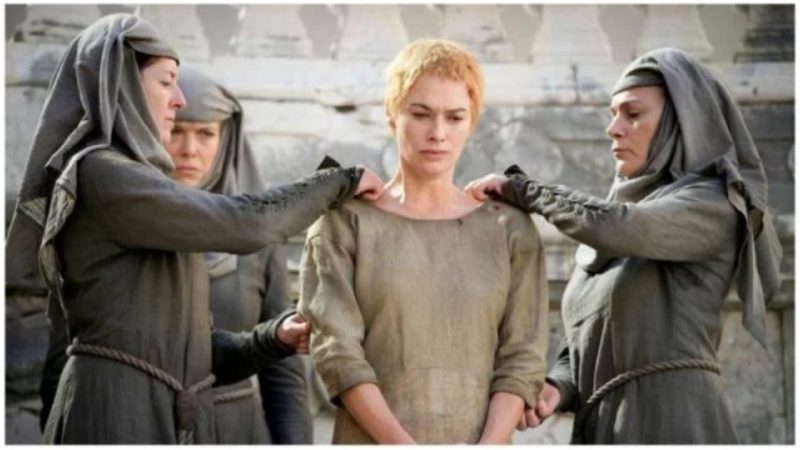
The historical position of royal mistress was a highly privileged arrangement but didn’t always offer security.
As royal marriages were usually dictated by political alliances, it was not unknown for the king to take up a lover, or in fact several. But his royal mistress was more than someone who would sneak into his bedchamber after dark — she would generally be a well-born lady who needed to be skilled in diplomacy.
They were sometimes referred to as “favorites,” a term also used for the close male confidants of the monarch, which reflects the influence that the king’s mistress could have over affairs of state. And, as with anyone close to the king, the security of holding power in court could disappear in an instant when he died.
In fact, it could be a tricky post to navigate during his lifetime. Aside from having to maintain a good relationship with the king’s wife, some royal mistresses acted as advisors; were relied upon to entertain their king; and most often would end up in debt after paying for the clothes, staff, carriages, and suchlike that they were expected to have.
Among the many royal mistresses in British history, the most famous is Elizabeth “Jane” Shore, dubbed “The Rose of London” for her renowned beauty.

The Penance of Jane Shore by William Blake, c.1780.
It was Shore’s story that inspired George R. R. Martin to write the chapter now widely-known as the “Walk of Shame.”
To Game of Thrones fans, this is one of the most unforgettable episodes of the series. In it, Cersei Lannister, who had been imprisoned by the violent religious group The Sparrows, is “freed” — but before she can resume her life in the palace she is stripped nude, and paraded through the streets to be jeered and spat at. As she is surrounded by people shouting obscenities, Cersei hears “Shame! Shame! Shame!” intoned over and over.

Walk of Shame. Photo by HBO
In an interview for Entertainment Weekly, Martin said that he was intrigued by the story of Jane Shore, who was punished with a similar walk after the king she loved died, and decided to implement that story in the book. “It was a punishment directed at women to break their pride and Cersei is defined by her pride,” he explains.

Theatre poster for Jane Shore at Royal Princess Theatre, Edinburgh, December 14, 1885.
Jane Shore’s walk of shame took place in 1483. She was born to a good standing family, who arranged her marriage to William Shore, a prosperous goldsmith. However, she did not hit it off with her husband and her plea for an annulment on the grounds of his impotency was finally granted in March 1479.
Later that same year, she caught the eye of King Edward IV and soon became one of his numerous mistresses.
However, Jane Shore was more than a mistress to Edward. The “Rose of London” was a great beauty and it’s been said that the king was in love with her, calling her his “merriest harlot.” Unlike his other concubines, Edward IV maintained a romantic relationship with Jane until his death from pneumonia on April 9, 1483, aged 40.

Detail of Ford Madox Brown’s painting of Chaucer reading to the court of King Edward III, depicting Alice Perrers and Edward III.
Jane’s position in court immediately changed. She had been wise enough to form close relationships with Edward IV’s stepson, Thomas Grey, and his best friend, William Hastings, which afforded her some protection.
Nevertheless, her allegiances did not save her from an attack by the late king’s brother, Richard III, who publicly condemned her as a “shameful and mischievous woman.” Richard was hated by many and generally considered to be an usurper to the throne following the disappearance and assumed murder of his nephews, aka the Princes in the Tower. Even Edward’s wife, the Queen consort Elizabeth Woodville, feared him and fled to Westminster Abbey to seek sanctuary.
It didn’t take long before Richard came on the stage and plotted his villainous scenario. He accused Jane Shore of being a treacherous messenger who encouraged plots between Hastings and the Woodville’s.

St Margaret Church in Westminster Abbey, London, England.
Hastings was beheaded right after the accusations without any trial, while Jane’s punishment for conspiring against Richard III was an open penance in the streets of London. She was forced to walk through the city wearing only a kirtle (a long medieval petticoat) and holding a taper in her hands. She was ridiculed and jibed throughout, according to her biography, though no physical harm was done to her.

Lena Headey. Photo by Denny Harrison CC BY 2.0
After the public humiliation, Shore was sent to Ludgate Prison where she won the attentions of the king’s Solicitor General. He was so captivated by her beauty that he arranged to have her released and then married her and had a child with her.
Historical records lack information of how Jane Shore felt after her walk of shame. But the Game of Thrones actress Lena Headey, who plays Cersei Lannister, said that she found very difficult filming the scene, commenting: “I don’t think anyone deserves that treatment.”
